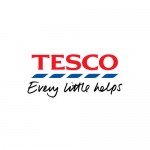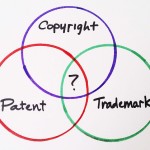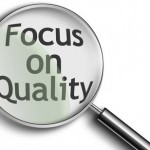
Resource based framework is different from alternative business strategy frameworks discussed above in a way that it analyses internal and external factors impacting strategy in an integrated manner. Resource based framework associates company’s competitive advantage with its access to valuable resource(s). While discussing this framework, Boone and Kurtz (2013) divide resources into three different categories: tangible, intangible and organisational. Tangible resources include physical items such as money, facilities, plants etc. All types of tangible resources can be acquired for money, however, the level of their utilisation and achieving their contribution to the bottom line depends on other types of resources discussed below. Intangible resources, on the other hand, include brand name, organisational knowledge and other similar intangible elements. Organisation-specific processes such as Total Quality Management (TQM), Just-in-Time (JIT) inventory can be mentioned as examples of organisational resources. Ginter (2013) explains that no two businesses possess exactly the same quality and amount of resources, and therefore the level of competitiveness amongst businesses will always vary. References Ginter, P.M. (2013) “The Strategic Management of Health Care Organisations” John Wiley & Sons

Competitive advantage has been defined as “something that the firm does better than its competitors that give it an edge in serving customers’ needs and/or maintaining mutually satisfying relationships with important stakeholders” (Ferrell, 2012, p.16). Core competency has been explained by Prahalad and Hamel (1990) as collective learning within organisations in terms of coordinating various kills and increasing the level of integration of multiple streams of technology. The concept of core competency is proposed by Prahalad and Hamel (1990) as collective learning within organisations in terms of coordinating various kills and increasing the level of integration of multiple streams of technology. Prahalad and Hamel (1990) argue that core competencies can be identified by asking following three questions: Firstly, which aspects of a product or service can provide it access to other markets? Secondly, which aspects of a product or service are perceived by potential and current customers as increasingly valuable? Thirdly, what are the specific elements associated with brand in general and/or product or service in particular that are difficult to be imitated by competitors? According to William and Curtis (2008) basing core competencies on product features and capabilities may prove to be counter-productive in terms of adapting to changes in external market environment. In other words, William and Curtis (2008) argue that core competency may become a core rigidity imposing threats to long-term growth prospects of the business. Practical implications of the concept of core competency are credited for the appreciation of importance of competitive advantage. It has been noted that “competitive advantage results when more customers become strong attached to the products of the organisation” (Sekhar, 2010, p.51). Boone and Kurtz (2013) discuss the role of imitability of competitive advantages for long-term growth prospects of businesses. Boone and Kurtz (2013) propose that low-order competitive advantages such as cost advantage…

The Chartered Institute of Marketing defines marketing as “the management process responsible for identifying, anticipating, and satisfying customer requirements profitably”. Definition of marketing offered by American Marketing Association, on the other hand, is worded as “the activity, set of institutions, and processes for creating, communicating, delivering, and exchanging offerings that have value for customers, clients, partners, and society at large” (AMA, 2014, online) Alternatively, marketing can be defined as “a business orientation that focuses on satisfying customers’ needs at acceptable levels of revenues and costs” (Loudon et al., 2010, p.2). Elements of marketing process of Tesco contain the following: 1. Analysis of the market and environment. Strategic tool to conduct this analysis include PESTEL, SWOT, Porter’s Five Forces, Value-Chain analysis and others. 2. Identification of the marketing target. Tesco targets specific segment of population in the UK and other countries where the supermarkets of the company operate. 3. Setting marketing objectives. Marketing objectives of Tesco include profit maximisation in short-term and long-term perspectives and increasing the value of the brand image. Marketing objectives of Tesco are closely associated with their business strategy which consist of the following seven elements (Vision and Strategy, 2013, online): a) to be growing the UK core, b) increasing international presence through offline and online channels, c) growing retail services in present markets, d) focus on corporate social responsibility, e) enhancing brand value, f) engaging in more diversification and g) creating value through teamwork. 4. Dealing with elements of the marketing mix. The importance of dealing with each elements of marketing mix taking into account needs, wants and other unique characteristics of target customer segment is fully understood by Tesco management. 5. Reflection, control and revision. This element of marketing process is used by Tesco marketing management in a periodic manner in order to assess the levels of effectiveness of…

Main forms of intellectual property protection available to companies include patents, trademarks, design copyright and trade secrets and important aspects of using these intellectual property protection techniques are discussed further below: Patenting is one of the most popular forms of intellectual property protection. Types of intellectual properties to be protected by patents relate to methods and processes that facilitate working of things (Davies and Cheng, 2011). Patents can be divided into two categories: utility patents and design patents and patents have been initially developed in order to assist inventors to recoup research and development expenses before competitors with the same products enter the market. Patent litigation issues are commonplace between multinational companies in general, and businesses in computing, consumer electronics and software industries in particular. For example, during the year of 2012 alone HTC, Taiwan-based global smartphone designer and manufacturer have been involved in ten patent litigation lawsuits (Annual Report, 2012). The importance of protection of intellectual property is duly understood by many multinational companies. For example, Pepsico publicly announces that “we protect our intellectual property rights globally through a combination of trademark, copyright, patent and trade secret laws, third-party assignment and non-disclosure agreements” (Annual Report, 2012, p.47). Moreover, one of the most recent cases of patent infringement lawsuit involve long-standing dispute between two global computer and consumer electronics manufacturing companies – Apple and Samsung. The dispute relates to Samsung’s use of technology that has been previously used by Apple for its IPhone and IPad products and patented. According to the verdict issued by a US Federal jury, Samsung Electronics has been ordered to pay Apple USD 290 million compensation (Martin, 2013). Implications of this particular lawsuit are significant at the global scale, because it illustrates severe negative financial and brand image damage implications of patent violation practices. Trademarks represent…

Total Quality Management (TQM) is a concept of continuous improvement that perceives quality as the most important aspect of the business strategy. It has been noted that “the TQM philosophy helps in organising the entire work force into small improvement groups, and creating a mind set of continuous improvement” (Davis, 2009, p.44). TQM elements are applicable by all businesses regardless of industry, geographical location, and even the volume of budget, although application of TQM elements needs to be taking into account a set of company-specific factors. There are differences in dimensions of quality between products and services and these differences have direct and substantial implications on LSC quality improvement initiatives. Specifically, for manufacturing businesses dimensions of quality include performance, features, reliability, conformance, durability, and serviceability. Quality dimensions of services, on the other hand, consist of timeliness, completeness, courtesy, consistency, accessibility, accuracy and responsiveness. Implementing all elements of TQM discussed below will have positive effects on the improvement of LSC quality dimensions above. Possible impact of all elements of TQM philosophy to LSC can be explained in the manner provided below. Meeting and exceeding customer expectations is one of the primary elements and ultimate outcome to be derived from TQM initiatives. Meeting and exceeding expectations students has positive contributions of LSC brand image and the amounts of profits in short-term and long-term perspectives. Quality priority covering all parts of the organisation is another integral element of TQM. Adoption of this principle by LSC would involve quality improvement initiatives not only in relation to content and delivery of teaching materials, but also constant and systematic quality improvements of campus facilities, internal customer services, marketing materials etc. By implementing constant quality improvement initiatives in relation to all parts and departments, LSC management will be able to re-reinforce positive impact to its image and…

Effectiveness of branding strategy is one of the most important critical success factors in business regardless of industry or geographical location of the company. Donelly (2009) stresses the importance of intangible elements of brands that include social meanings, symbolism, and a type of culture associated with the brand. Boone and Kurtz (2013) confirm this viewpoint and relate the benefits derived from intangible elements of brand to high levels of customer loyalty. Moreover, business scholars convincingly argue that “a brand represents the full ‘personality’ of the company and is the interface between a company and its audience” (Davis, 2009, p.12). HTC has been founded in 1997, and has shorter history and heritage compared to its major competitors. Nevertheless, HTC marketing management has been able to link the brand image with an effective harmony between the price and quality. This marketing message is integrated into the official slogan of the brand ‘quietly brilliant’ that can be interpreted in a way that although HTC does not engage in expensive marketing campaigns, its smartphones can compete with the products of other brands in equal terms. HTC operational cost advantage achieved through economising on marketing and a set of other business processes are passed to consumers to sustain its main competitive advantage of cost effectiveness. Changes in global smartphone market share Source: DrameXchange (2014, online) As it is illustrated in Figure above HTC market share in the global marketplace has decreased by 0.4 per cent, from 4.7 per cent in the first quarter of 2012 to 4.3 per cent of the same quarter of 2013. Generally, the global market of smartphones has grown by 37 per cent during 2012, and the extent of market penetration in smartphone industry within top 19 markets has been assessed at 35.5 per cent and this number is expected to…

HTC Corporation is a global smartphone designer and manufacturer based in Taiwan and the company has generated the revenues of NT$289 billion in 2012 with consolidated operating margin at 6.51% (Annual Report, 2012). Brand essence represents the core of the company and it is impacted by the following elements that constitute brand essance wheel: Attributes of HTC brand in general relate to thin, candy bar form of smartphones with large displays and these attributes have been applied to HTC Desire 600 model as well. Benefits offered by HTC Desire 600 include using certain functionalities of a computer on a mobile phone, whereas on emotional level, these benefits also include sense of being cool, trendy and productive. Consumer values associated with HTC Desire 600 relates it the price aspects of the product. Specifically, while product benefits discussed above are offered by other companies as well such as Apple, Samsung, and Google, cheaper price of HTC Desire 600 compared to many other similar products is perceived to be as a valuable point by consumers. Brand personality relates to a set of human characteristics that can be applied to brands. Components of brand personality include sincerity, excitement, competence, ruggedness and sophistication (Franzen and Moriarty, 2009). According to this categorisation, HTC brand personality can be classified as excitement, because it integrates the elements of cool, youth and fun. HTC Desire 600 benefits and value as explained above reflects changes in consumer needs and wants in a direct manner. In other words, intensive levels of competition in smartphone industry have increased the levels of customer expectations, needs and wants in relation to smartphones. HTC Desire 600 addresses this change by integrating most of the latest developments in smartphone technology in the product and offering the product for a competitive price. References Annual Report (2012)…

The nature of leadership in private sector organisations is directly impacted by the primary purpose of such organisations and this primary purpose is profit maximisation (DuBrin, 2012). This opinion is confirmed by Goldsmith et al. (2010), who perceive profit maximisation as the main assessment criteria for private sector organisational leaders. According to Gold et al. (2010) constant search for competitive advantage can be justly specified as one of the most fundamental characteristics of leadership in private sector organisations. According to this stance, competitive advantage can be derived from a wide range of sources and business processes, and it is the responsibility of a business leader to be able to formulate the most appropriate competitive advantage, and ensure its efficient utilisation. Stanfield (2009) explore the issues of ethics for modern business leaders and conclude that the level of ethical requirements have increased for business leaders in the last several decades contributed by increasing level of scrutiny business leaders are being subjected to. Stanfield (2009) offers justification for this claim by stating that increasing role of viral media in the society makes any evidence of unethical behaviour hard to escape from. Maintaining high level of flexibility and implementing changes in relation to various business processes in a constant manner is pointed to as a significant challenge to business leaders by Kezar et al. (2011) and Kreitner and Cassidy (2012). Moreover, Kezar et al. (2011) stress the role of assertiveness and communication skills for business leaders in order to be able to implement changes in an efficient manner. The issue of talent management by business leaders comprehensively addressed by Bertocci and Bertocci (2009) reveals another important aspect of successful leadership practice. Specifically, according to Bertocci and Bertocci (2009) human resources need to be perceived as the most valuable business asset in the 21st…
Numbers of authors have addressed different aspects of leadership in public sector organisations in their works. Generally, public sector leadership has been described as “more specific than general leadership and more expansive than political leadership” (Raffel, 2009, p.4). There have been attempts to classify the types of leaders and followers in public sector organisations within a certain framework. One of the most notable examples of such works belong to Wart (2009), how specifies the types of leaders and followers in public organisations in the following manner: Types of work Execution Policy New ideas Types of Followers Employees Managers Executives with policy responsibilities Transformational leaders Constituents Community leaders of volunteer groups Legislators and advisory board members Lobbyists and policy entrepreneurs Adherents Small group leaders Leaders of social movements Philosophical zealots and social trend setters Types of leaders and followers Source: Wart (2008) Gallos (2008) declares employee motivation to be one of the most significant challenges met by public sector organisational leaders. Bertocci and Bertocci (2009) offer more detailed explanation to this viewpoint by stating that whereas managers in private sector have greater level of freedom in terms of rewarding and motivating employees through tangible motivational tools such as bonuses and pay rises; managers in public sector do not have such opportunities most of the time due to budget constraints and greater level of accountability associated with budget spending. The nature and extent of accountability to stakeholders in public sector represents another point of difficulty to organisational leaders, Stanfield (2009) argues. The author asserts that unlike private sector organisations, in pubic sector there is a greater level of scrutiny of performance from media and a wide range of other stakeholders, and this situation creates extra difficulties for organisational leaders in public sector. Moreover, Gold et al. (2010) state…

Completing the Marketing Design and Innovation module and report has been a great learning opportunity for me in many levels. Thanks to this module I obtained an in-depth knowledge about the main features of product and service design from marketing viewpoint, in both theoretical, as well as, practical levels. The contents of the module and an effective teaching style of the tutor have played an instrumental role in assisting me to distinguish between the key characteristics of the designing process within the settings of ever-changing consumer taste and highly dynamic nature of style. Moreover, Marketing Design and Innovation module has taught me the importance of patenting ideas, registering designs, and safeguarding own intellectual property in a timely and appropriate manner. Also, I do believe that a set of organisational theories and business frameworks that I learned in this module will find their application in the future, to contribute to the achievement of my career objectives. The experience of attending the module and completing the report has equipped me with ideas about innovation and design. At the same time, I had a set of pre-conceived ideas about innovation and design that have changed as a result of completing the module and preparing the report. Specifically, previously I did not fully appreciate the importance of introducing innovations in various aspects and features of products and services in regular manner. However, towards the end of the module I became convinced that introduction of regular innovations in various aspects and features of products and services has become one of the basic survival requirements in modern highly competitive marketplace. Similarly, a highly dynamic nature of design can be specified as another point that I learned during the process of completing the module and preparing the report. I have to admit that the process of completing…
